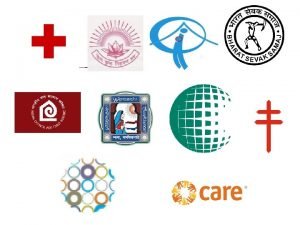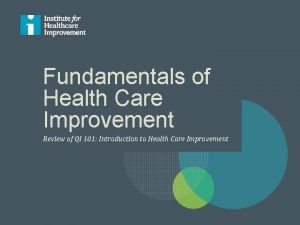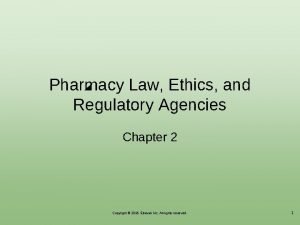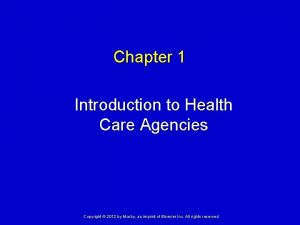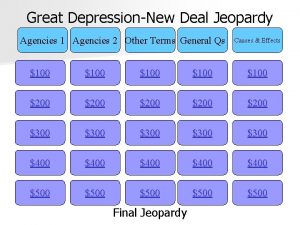Chapter 1 Introduction to Health Care Agencies Copyright















- Slides: 15

Chapter 1 Introduction to Health Care Agencies Copyright © 2012 by Mosby, an imprint of Elsevier Inc. All rights reserved.

Health Care Agencies The person is always the focus of care. Staff members have special talents, knowledge, and skills. Ø All work to meet the person’s needs. Copyright © 2012 by Mosby, an imprint of Elsevier Inc. All rights reserved. Slide 2

Agency Purposes The purposes of health care include: Ø Ø Health promotion • The goal is to reduce the risk of illnesses. Disease prevention Detection and treatment of disease Rehabilitation and restorative care Many agencies are learning sites for students. Ø The students assist in the purposes of health care. Copyright © 2012 by Mosby, an imprint of Elsevier Inc. All rights reserved. Slide 3

Types of Agencies Hospitals Rehabilitation and subacute care agencies Long-term care centers (nursing homes, nursing facilities, nursing centers) Ø Skilled nursing facilities (SNFs) Assisted living residences Mental health centers Home care agencies Hospices Health care systems Copyright © 2012 by Mosby, an imprint of Elsevier Inc. All rights reserved. Slide 4

Organization An agency has a governing body called the board of trustees or board of directors. The board makes policies. Ø An administrator manages the agency. Ø Directors or department heads manage certain areas. Ø The health team (interdisciplinary health care team) involves the many health care workers whose skills and knowledge focus on the person’s total care. The goal is to provide quality care. Ø The person is the focus of care. Ø Copyright © 2012 by Mosby, an imprint of Elsevier Inc. All rights reserved. Slide 5

Organization (cont’d) Nursing services Ø Ø The director of nursing (DON) is an RN. • The DON is responsible for the entire nursing staff. Nurse managers assist the DON. Nursing areas usually have charge nurses for each shift. • Staff RNs report to the charge nurse. • LPNs/LVNs report to staff RNs or to the charge nurse. • You report to the nurse supervising your work. Nursing education (staff development) is part of nursing services. Copyright © 2012 by Mosby, an imprint of Elsevier Inc. All rights reserved. Slide 6

The Nursing Team The nursing team involves those who provide nursing care. Registered nurses Ø Licensed practical nurses and licensed vocational nurses Ø Nursing assistants Ø Copyright © 2012 by Mosby, an imprint of Elsevier Inc. All rights reserved. Slide 7

Nursing Care Patterns The pattern used depends on how many persons need care, the staff, and the cost. Ø Ø Ø Functional nursing focuses on tasks and jobs. Team nursing involves a team of nursing staff led by an RN. Primary nursing involves total care. Case management is like primary nursing. • A case manager (an RN) coordinates a person’s care. Patient-focused care is when services are moved from departments to the bedside. Copyright © 2012 by Mosby, an imprint of Elsevier Inc. All rights reserved. Slide 8

Paying for Health Care Private insurance is bought by individuals and families. Group insurance is bought by groups or organizations for individuals. Copyright © 2012 by Mosby, an imprint of Elsevier Inc. All rights reserved. Slide 9

Paying for Health Care (cont’d) Medicare is a federal health insurance program for persons 65 years of age or older. Some younger people with certain disabilities are covered. Ø Part A Ø Part B Ø Medicaid is a health care payment program sponsored by the federal government and operated by the states. Copyright © 2012 by Mosby, an imprint of Elsevier Inc. All rights reserved. Slide 10

Paying for Health Care (cont’d) Prospective payment systems limit the amount paid by insurers, Medicare, and Medicaid. Ø Ø Diagnosis-Related Groups (DRGs) are for hospital costs. Resource Utilization Groups (RUGs) are for SNF payments. Case Mix Groups (CMGs) are used for rehabilitation centers. Home Health Resource Groups (HHRGs) are used for home health care. Copyright © 2012 by Mosby, an imprint of Elsevier Inc. All rights reserved. Slide 11

Paying for Health Care (cont’d) Managed care Ø Managed care deals with health care delivery and payment. • Managed care limits: The choice of where to go for health care The care that doctors provide Managed care as pre-approval for services. Ø Many insurers must approve the need for health care services. If the need is approved, the insurer pays for the services. If the need is not approved, the person pays the costs. Copyright © 2012 by Mosby, an imprint of Elsevier Inc. All rights reserved. Slide 12

Meeting Standards are set by: The federal and state governments Ø Accrediting agencies Ø An agency must meet standards for: Licensure Ø Certification Ø Accreditation Ø Copyright © 2012 by Mosby, an imprint of Elsevier Inc. All rights reserved. Slide 13

Meeting Standards (cont’d) Surveys are done to see if the agency meets set standards. If standards are met, the agency receives a license, certification, or accreditation. Ø When problems (deficiencies) are found, the agency: • Is given time to correct them • Can be fined for uncorrected or serious deficiencies • Can lose its license, certification, or accreditation Ø Copyright © 2012 by Mosby, an imprint of Elsevier Inc. All rights reserved. Slide 14

Meeting Standards (cont’d) You have an important role in meeting standards and in the survey process. Copyright © 2012 by Mosby, an imprint of Elsevier Inc. All rights reserved. Slide 15
 Health care agencies introduction
Health care agencies introduction Kasturba memorial fund aims and objectives
Kasturba memorial fund aims and objectives Primary secondary tertiary health care definition
Primary secondary tertiary health care definition Staffing pattern of sub centre
Staffing pattern of sub centre Most voluntary health agencies operate at the
Most voluntary health agencies operate at the Welfare agencies
Welfare agencies Function of voluntary health organization
Function of voluntary health organization International health agencies
International health agencies Health and social care values unit 2
Health and social care values unit 2 Health and social care component 3
Health and social care component 3 Ihi l 101
Ihi l 101 Introduction of health care delivery system
Introduction of health care delivery system Qi 101: introduction to health care improvement
Qi 101: introduction to health care improvement Chapter 22 regulatory and advisory agencies
Chapter 22 regulatory and advisory agencies Pharmacy law ethics and regulatory agencies
Pharmacy law ethics and regulatory agencies Chapter 3 careers in health care answer key
Chapter 3 careers in health care answer key

